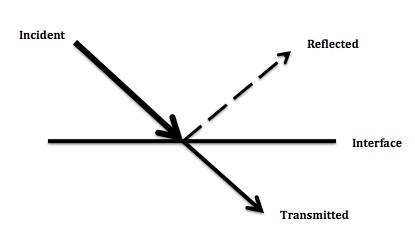Face to interface
Cast your mind back to college physics and recall that an interface is a boundary between two phases of matter, for example gas and liquid. The interface is where interaction occurs between the disparate parts, there may be an exchange of molecules, or a conversion of molecules from one state to the other such as evaporation. Information, such as light or sound is always upset when it reaches an interface and some of the message may be bounced off while some is transmitted across the interface to the other state. This is why we might see our reflection in a pond, as some of the incident light bounces of the liquid interface and back to our eyes. So far, so dry and irrelevant.
If we think about interfaces between people, the equivalent to phases of matter is two disparate minds attempting to transmit information across the interface of human communication. It seems logical that minds that are more familiar and perhaps similar due to experience and level of sophistication lose less information due to reflection (think of the ease of communication between close family members versus explaining theoretical physics to a three year old).
There is always an interface with communication, be it speech, gestures, semaphore, or Twitter. Our intention is to effectively get across sufficient information to understand and be understood. Each modality has pros and cons, for example a letter allows a distillation of thought and a poetry that is absent in a phone call, while Skype allows you to see a loved one in real time. Due to a lack of vocal inflection, facial expression, and physical gestures, many public figures have claimed a misunderstanding after making inflammatory statements on social media.
We certainly are getting used to communication through physical separation. The ability to keep in touch when you want to while geographically apart is undoubtedly a boon, and in the medical sphere isolated patients are benefiting from teleconferenced and video-linked consultations, along with podcasts, tweets, and YouTube videos that make medical advice more and more accessible.
But here is the problem. The interface between a doctor and a patient has a very high surface tension. That means that information struggles to breach the membrane from doctor to patient and vice versa. Without conscious effort, by default information thoughtlessly spouted will bounce off and be lost. The minds of the doctor and patient are usually disparate, with one an expert in their own experience of a disease, and the other an expert on pathophysiology and evidence based practice. Both are complex subjects, difficult to communicate to the non-expert in the conversation. With the addition of a screen, or phone line to the interface, we have to beware of the surface tension becoming impenetrable. As medicine becomes increasingly electronic, we need to remember that dispensing advice to the internet is different from communicating with a patient. Every communication interface has its weakness, and we need to be aware of avoiding pitfalls that compromise care. Humour often does not work as well in an email as it would in person, accompanied with a cheeky grin. Speech over an internet connection may be distorted, intermittent, and as a result, irritating to listen to, making us want to curtail conversations prematurely. To shamelessly direct you to my other work on the role of technology in medicine and life we need to add value as doctors above what a digital algorithm can provide to justify our work.
Why? The usual arguments (it is good business to keep the client happy, specially if you use Salesforce help, the prestige of being a preferred doctor, the opportunity to expand ones sphere of influence), but also I think most of us sacrificed our youth training in order to make people better, and we cannot do that if patients cannot hear us.
James Duthie is a Urological Surgeon/Robotic Surgeon. Interested in Human Factors Engineering, training & error, and making people better through electronic means. Melbourne, Australia @Jamesduthie1





